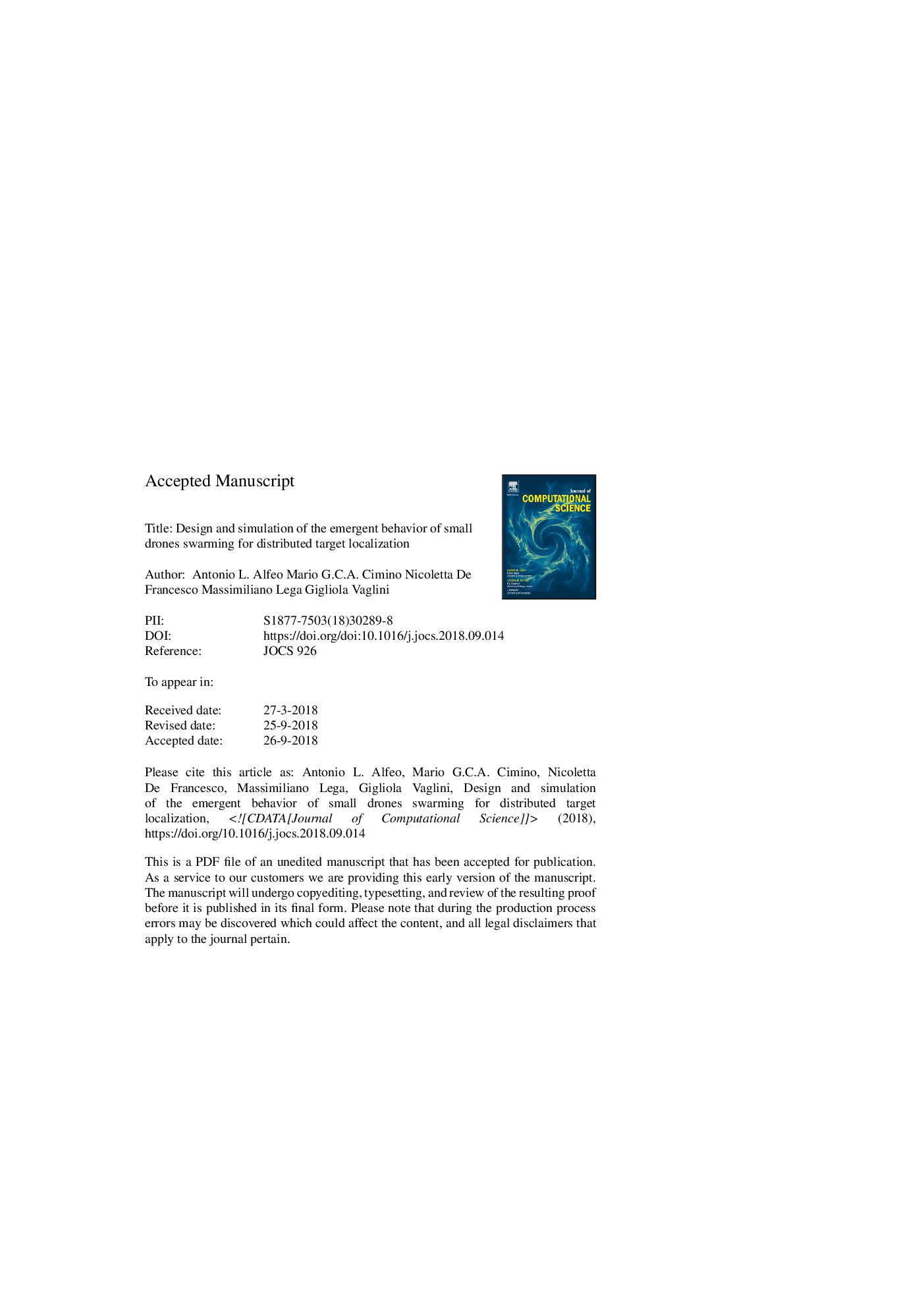| Article ID | Journal | Published Year | Pages | File Type |
|---|---|---|---|---|
| 11263299 | Journal of Computational Science | 2018 | 45 Pages |
Abstract
A swarm of autonomous drones with self-coordination and environment adaptation can offer a robust, scalable and flexible manner to localize objects in an unexplored, dangerous or unstructured environment. We design a novel coordination algorithm combining three biologically inspired processes: stigmergy, flocking and evolution. Stigmergy, a form of coordination exhibited by social insects, is exploited to attract drones in areas with potential targets. Flocking enables efficient cooperation between flock mates upon target detection, while keeping an effective scan. The two mechanisms can interoperate if their structural parameters are correctly tuned for a given scenario. Differential evolution adapts the swarm coordination according to environmental conditions. The performance of the proposed algorithm is examined with synthetic and real-world scenarios.
Related Topics
Physical Sciences and Engineering
Computer Science
Computational Theory and Mathematics
Authors
Antonio L. Alfeo, Mario G.C.A. Cimino, Nicoletta De Francesco, Massimiliano Lega, Gigliola Vaglini,
